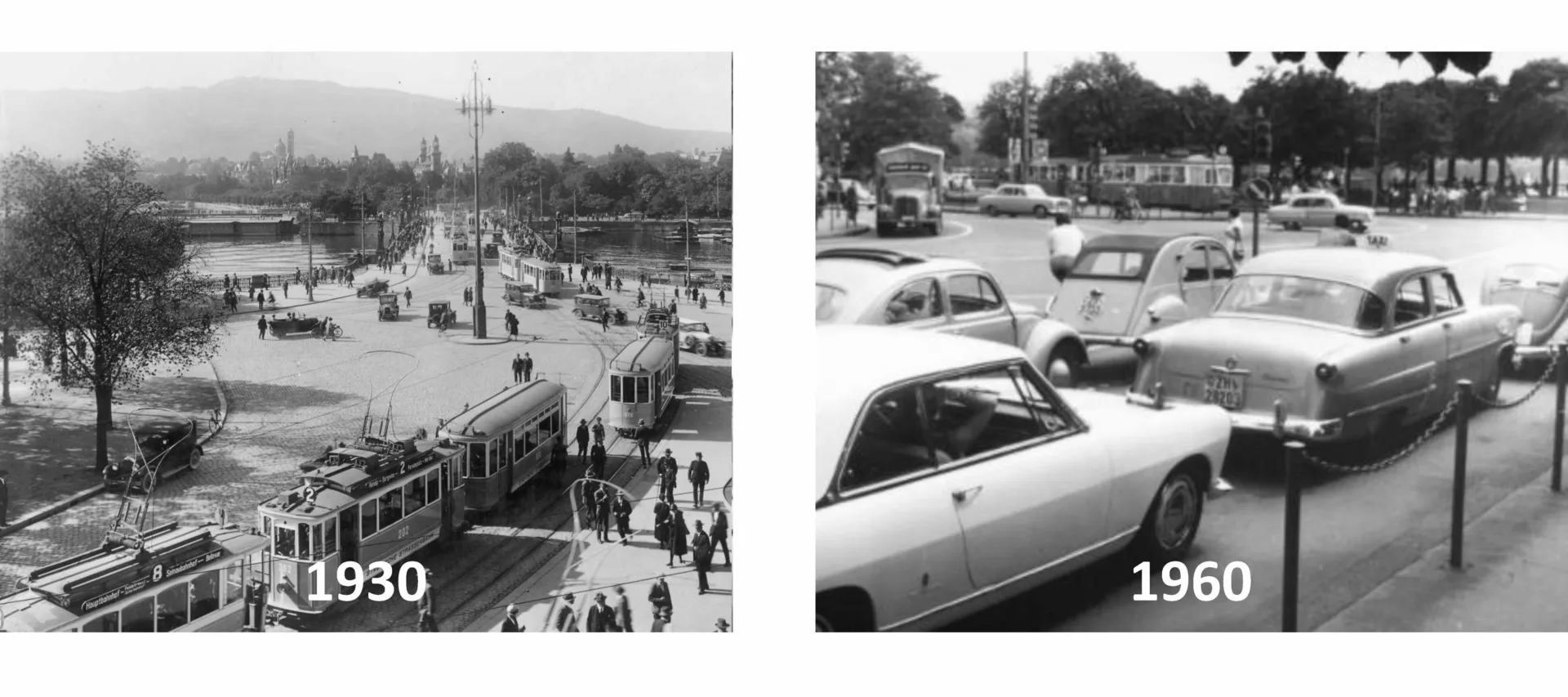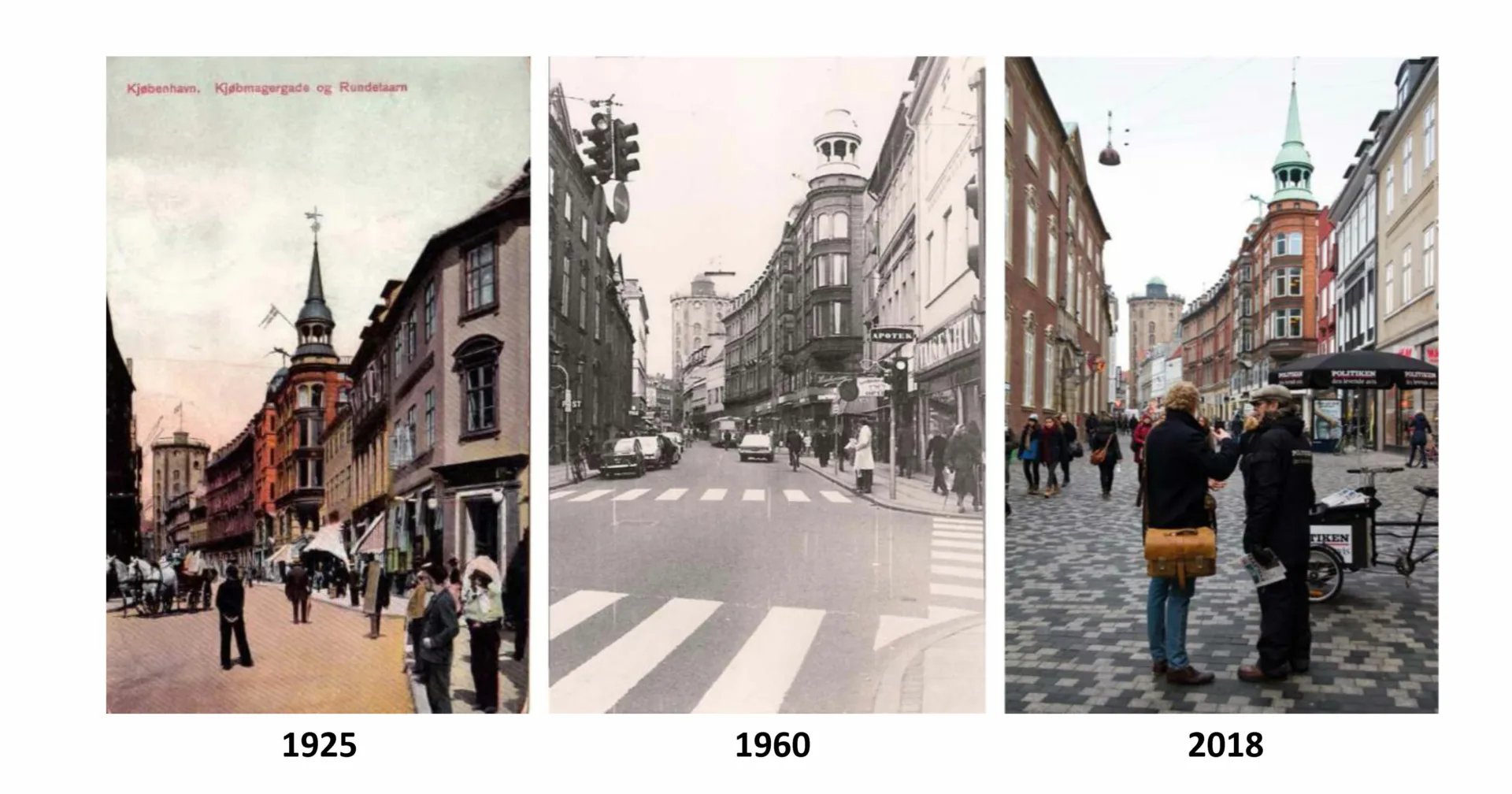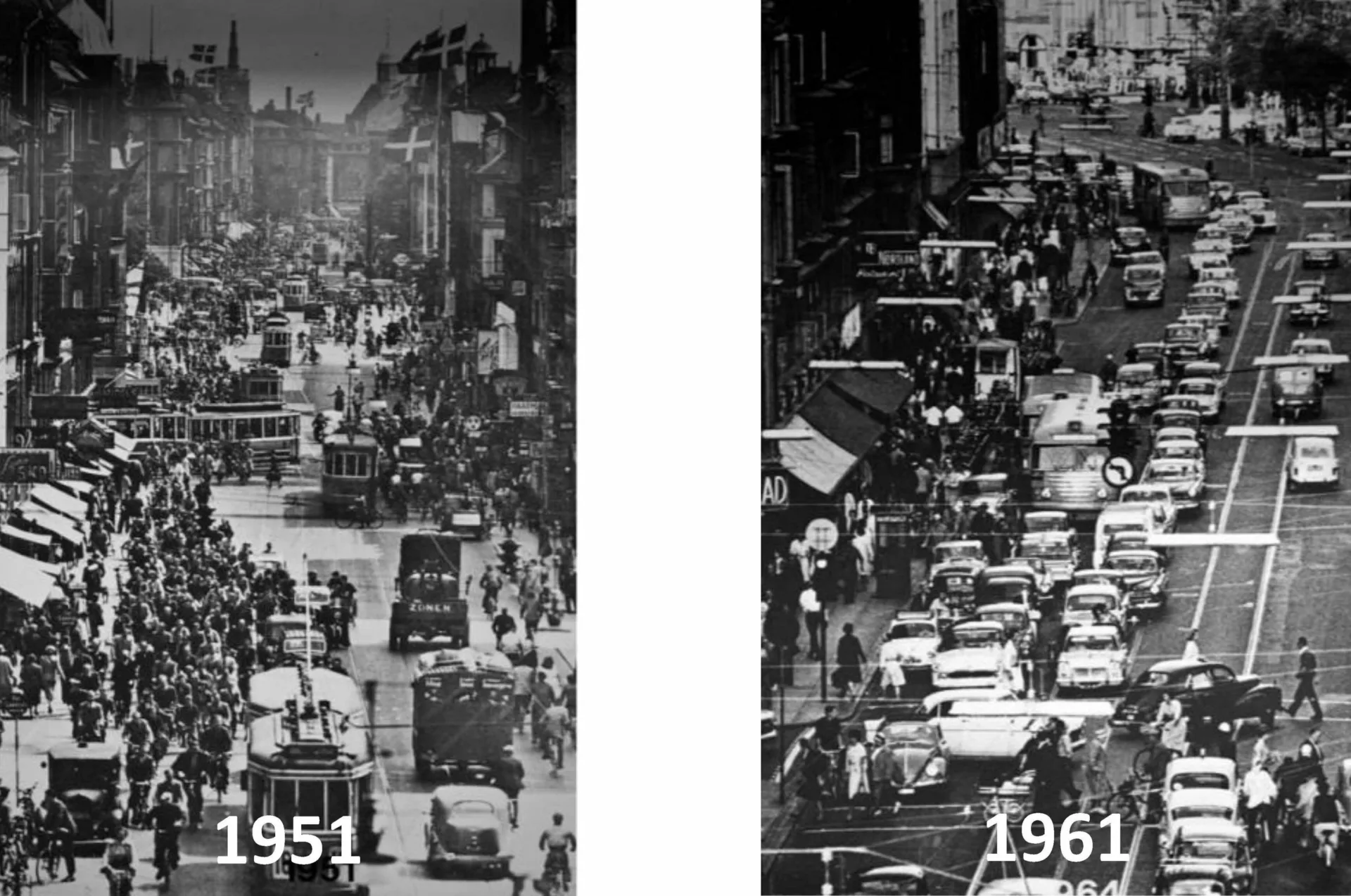
Adjoining houses were often characterised by beautiful front porches, which – even before the TV set arrived in the living room – were used toentertain people in the scarce spare time that was available. Sitting in the rocking chair, it was possible to observe the hustle and bustle of the street life going on directly in front of the house.
With the advent of the automobile, these stomping grounds underwent a radical change. Within a few years, the eclectic mix of life disappeared, to be replaced by traffic. Where before people talked, children played and horses galloped, motorised vehicles of various types now drove in predefined lanes. At record speed, the car had conquered the cities.
This development underwent its most dramatic phase between 1960 until well into the new millennium. Today, the evidence of this shift can be seen all over the world. Most of all in the United States, where large cities were constructed or redeveloped exclusively around the needs of car users, or in England, where the focus of life turned to the “back garden”.
Without knowing what the specific catalyst may have been, around 20 years ago a new awareness of this non-human-centred urban development began to emerge. Today, this awareness is much closer to mainstream opinion, while growing numbers of cities are recognising the quality and importance of public spaces and are shifting their thinking around the topic. In other words, it is a rediscovery of the purpose and quality of public spaces before the advent of the automobile. The reclaimed open and public spaces that are opening up in the inner cities – the same spaces that were forced to cope with a flood of traffic over a period of decades – are often quite similar to the original "stomping grounds". Copenhagen or Zurich both offer excellent examples of this welcome trend.


This withdrawal into the interior of buildings and into the inner courtyards had considerable consequences for urban life. Meeting other people spontaneously was no longer as straightforward. The courtyards were reserved for the immediate neighbourhood. If you wanted to meet someone at home, you had to invite that person to your home. Meanwhile, the number of vehicles passing by the average house continued to grow year on year. To prevent gridlock, the streets were widened and pedestrians found themselves increasingly marginalised, which in turn meant that thepublic space lost its status as a place for social exchange.
